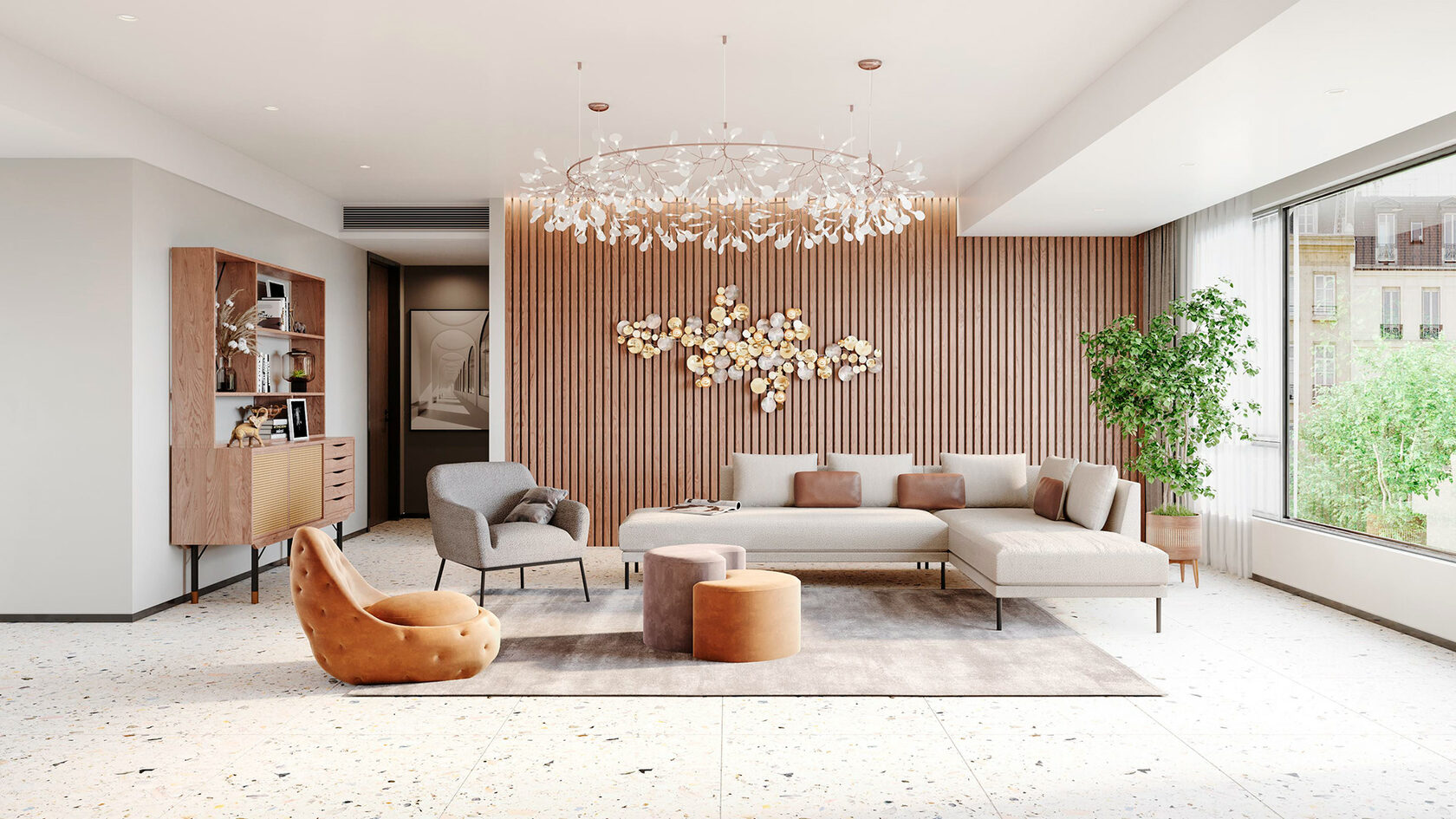
Style Meets Technology: How CGI is Changing Furniture and Interior Design
Computer-generated images and videos, often referred to as CGI, are revolutionizing how we design and sell furniture and interior decor. Whether you’re a designer or a seller, understanding the benefits of CGI is crucial. This cutting-edge technology allows you to create and visualize realistic 3D representations of furniture concepts on your screen, enabling you to experiment with and modify designs before bringing them to life. Furthermore, it empowers you to present customers with compelling visualizations of how items, furniture pieces, and entire rooms might appear in various color schemes and layouts.
CGI accelerates the design process and reduces the costs associated with creating and marketing designs. This article explains how CGI works and demonstrates how its application can benefit your business at every stage, from initial ideas to the production and marketing of products.
How CGI Impacts Furniture Design Process
Computer-generated imagery (CGI) refers to creating 3D digital models and lifelike visuals on a computer. As a furniture designer, CGI allows you to digitally construct and view realistic 3D models of CGI furniture before physically creating them. This can impact your design process in a few key ways:
Visualizing Your Concepts Early On
With CGI, you can model approximations of your ideas on screen. This gives you an advanced visualization of scale, presence, styling, colors, and more. Seeing CGI versions helps you assess overall shape, proportions, and appeal earlier. This enables you to refine concepts digitally before prototyping.
Enabling Your Iterations Digitally
Once you’ve created a CGI model, you can swiftly adjust the shape, fabrics, finishes, colors, and tiny details. CGI allows you to do rapid digital iterations to perfectly tune the look as needed. This is much faster than repeatedly modifying physical prototypes.
Reducing Your Reliance on Physical Prototypes
The ability to visualize and modify designs digitally with CGI greatly reduces the number of physical prototypes you require. Each physical prototype can be costly and time-consuming to construct by hand. CGI enables your major refinements virtually, saving you money and time.
How CGI Helps You Market Furniture and Interior Design
CGI allows you to showcase your furniture and interior designs in extremely realistic and flexible ways. This provides many advantages for your marketing and sales.
Showcasing Realistic Renditions of Your Offerings
You can create beautifully detailed 3D renderings of your furniture and interior spaces with CGI. The CGI models appear just like real life. All materials, textures, lighting, and colors look accurate and vivid. This helps you highlight the visual appeal of your offerings.
Enabling Customization for Your Marketing Needs
CGI makes it easy to modify rendered furniture and rooms to suit different ads and uses. You can swiftly adjust colors, fabrics, styles, arrangements, lighting, and more. This empowers you to showcase the range and versatility of your offerings.
Lowering Your Photoshoot Costs
Using CGI furnishings and interior renderings can reduce your need for expensive photoshoots. CGI helps you minimize costs associated with travel, rentals, hiring crews, booking locations, and coordinating schedules. Your marketing becomes more efficient and cost-effective.

Photographer: Curtis Adams
How CGI Gives More Options for Your Consumers
CGI technology offers your furniture and interior design clients more freedom and flexibility. This allows you to provide a customized experience that meets their individual needs.
Enabling Detailed Customization
With CGI, you can allow clients to customize intricate details of furniture and decor pieces to fit their tastes. For example, they can pick exact fabrics, finishes, hardware, dimensions, configurations, and more. CGI allows you to render hyperrealistic images of client-selected options so that they can visualize the personalized details.
Showcasing Spaces Through Virtual Staging
CGI empowers you to create lifelike 3D renderings and walkthroughs of fully furnished rooms to showcase design concepts to clients. You can stage living spaces, offices, and more with different furniture arrangements, styles, color schemes, lighting, accessories, and spatial flows tailored to the client. This visually brings your staging and design expertise to life before purchase.
Making Iterations Fast and Simple
It’s easy for you to swiftly produce iterations, revisions, and alternatives with CGI at clients’ request. For instance, you can quickly generate and visualize options for furniture colors/styles, layouts, lighting elements, decorative pieces, and overall design details. This allows you to conveniently explore many customized possibilities with each client.
CGI provides more flexibility and personalization options when selling your furniture and designs. It enables you to deliver a tailored experience and meet each client’s unique needs.
What’s Next for CGI in Furniture and Interior Design?
CGI will likely keep changing how furniture and decor get designed and sold. Here are some significant ways CGI could improve things in the future:
Even More Realistic Details
As this technology gets better, CGI models will look even more real. Real-world textures, shadows, reflections, and movements will be rendered precisely down to the smallest details. You can visualize the nuances of wood grains, fabric weaves, leather pores, upholstery tufts, and more. This hyperrealism will enable superior evaluation of concepts and offerings.
Streamlined Digital Process
With advanced CGI, the whole design and production process might become digital. You may be able to craft concepts, model CGI prototypes, assess/modify designs, engineer technical specifications, and program production machinery, all in an interconnected virtual environment. This could significantly increase your business’s workflow speed, flexibility, and efficiency.
Use in Augmented and Virtual Reality
CGI 3D furniture and staged interior models could be brought to life via augmented reality (overlaying CGI in real-world settings) or fully immersive virtual reality. This would enable prospective buyers to digitally walk through, interact with, and evaluate lifelike CGI versions of your offerings in their own spaces. It takes visualization to the next level.
Expanded Customization Capabilities
Improved algorithms and computing power may enable CGI systems to offer almost endless customization options to clients. For example, parts and materials could be easily swapped/mixed and matched. Customers could submit specialized specifications to create their dream products. Mass personalization could become a reality.
Integration with Emerging Digital Tools and Platforms
CGI software could interface with digital innovations like 3D scanning for customizable fittings, cloud-based collaborative design platforms, virtual and augmented conferencing for client meetings, eCommerce, and interior planning tools. This could create extremely streamlined, digital-first workflows for your business.
Conclusion
CGI is truly transforming the processes, offerings, and experiences within furniture design and interior staging. While computer imagery technology has already had a significant impact, it is still in its relative infancy, with so much potential still untapped. As CGI capabilities evolve, we expect to see emerging innovations that meet practical business needs, expand creative possibilities, and forge deeper human connections between designer and consumer.




